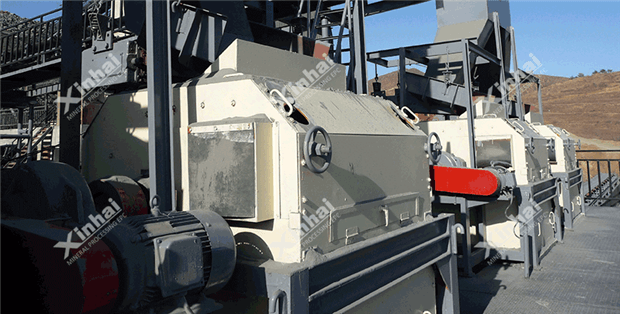
Magnetic separators play dual roles in mining. It protects equipment from tramp metal and recovering valuable minerals or removing magnetic impurities from ore
Dry vs wet: Dry units for pre-concentration and equipment protection; wet units for slurry-based recovery .
Magnetic intensity:
Low (e.g., LIMS, drum magnets) for iron ore
High (e.g., rare-earth rolls, induced roll) and high-gradient (e.g., HGMS, matrix) for weakly magnetic minerals
| Equipment Type | Use Case | Description |
| Overband magnets & head pulleys | Tramp metal removal | Deep fields, installed over belts or in-pulley |
| Drum separators | Iron ore, magnetite | Rotating drum; ferrous sticks to shell |
| Rare-earth roll / induced roll | Dry beneficiation of paramagnetics | Permanent or electromagnetic rolls pull magnetic phases |
| High-gradient / matrix separators | Fine/weakly magnetic minerals | Intense field via matrix to extract fine particles |
| Three-disc high-intensity separators | Special minerals (e.g., tungsten, rare earth) | Adjustable, high-intensity dry units |
| Wet drum separators & electromagnetic filters | Slurry processing | Slurry-fed units for wet magnetic recovery |

Tramp metal units use deep magnetic fields to attract and remove ferrous. Ore beneficiation uses shallow or matrix-supported fields to selectively separate based on magnetic susceptibility.
Ferromagnetic: Magnetite, nickel, cobalt — recovered by low-intensity units
Paramagnetic: Ilmenite, hematite, tungsten minerals — benefits from high-intensity
Diamagnetic: Impurities like silica are separated out in high-gradient setups
| Type | Advantages | Considerations |
| Self-cleaning | Automatically discharges ferrous materials; reduces manual labor | Higher initial cost; more complex structure |
| Fixed (Stationary) | Simpler design; lower cost | Requires periodic manual cleaning |
| Permanent Magnet | Energy-efficient; no external power needed | Magnetic field is constant; cannot be turned off |
| Electromagnetic | Switchable magnetic field; adjustable strength | Higher energy consumption; requires power supply & cooling |
Enhances plant safety by shielding crushers and conveyors
Increases product purity
Enables fine mineral recovery, even from low-grade ore
Supports sustainability: dry processes without chemicals, lower power use with permanent magnets
Lab test facilities (e.g., Bunting Redditch) enable tailored designs
Modular and digital designs (e.g., Mineral Technologies’ HGMS/LIMS) support scalability and automation
Permanent magnet units can reduce operating costs by 30–50% compared to electromagnets
Magnetic separation is a proven, versatile method supporting both equipment protection and mineral recovery.
Explore the complete chrome ore beneficiation process, including ore types, advanced technologies, and equipment selection. Learn how to improve recovery rates and reduce energy consumption in chrome ore processing.
Shandong Xinhai Mining Technology & Equipment Inc. is a global leader in chrome ore beneficiation. The company has over ten years of experience. It continues to innovate in chrome ore processing equipment. Xinhai helps clients improve concentrate grade, increase recovery rate, and reduce costs. All equipment supports green mining practices.
